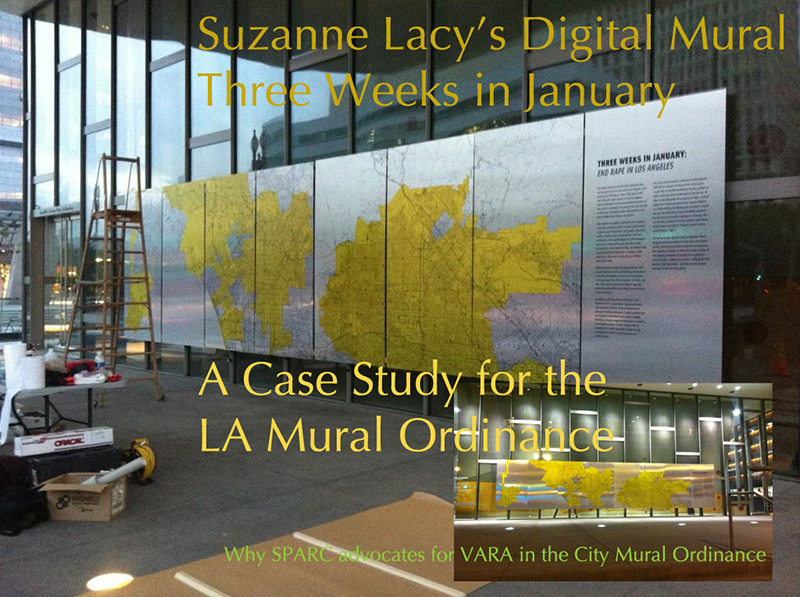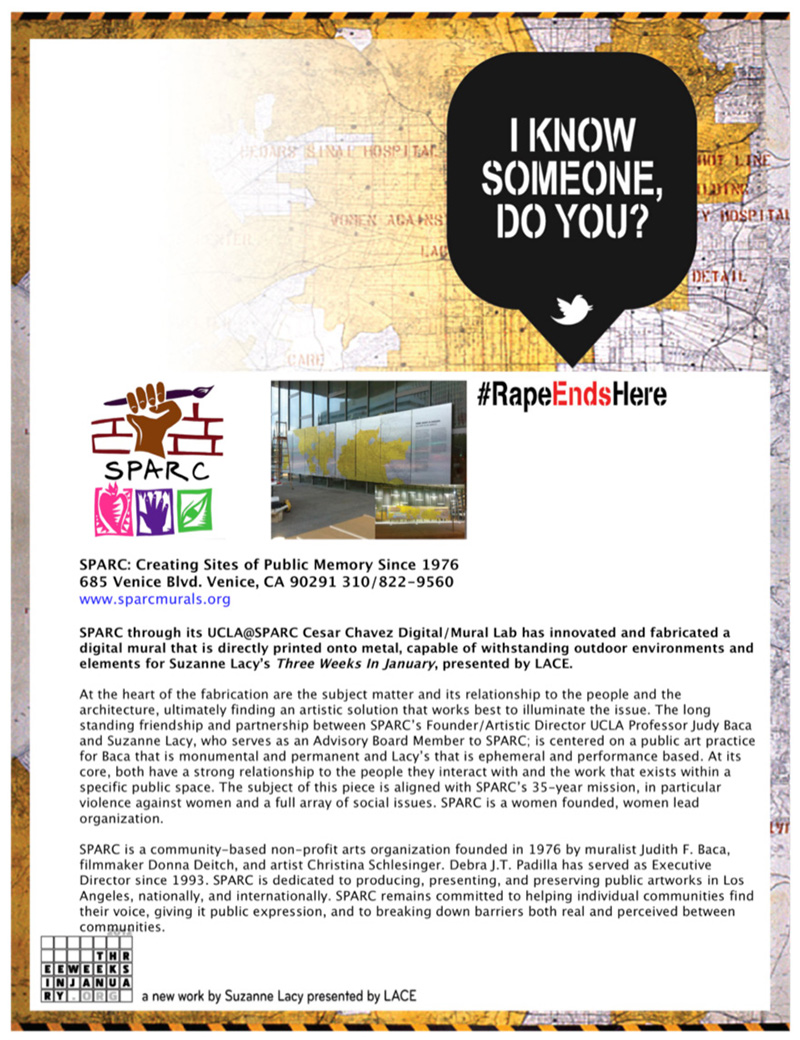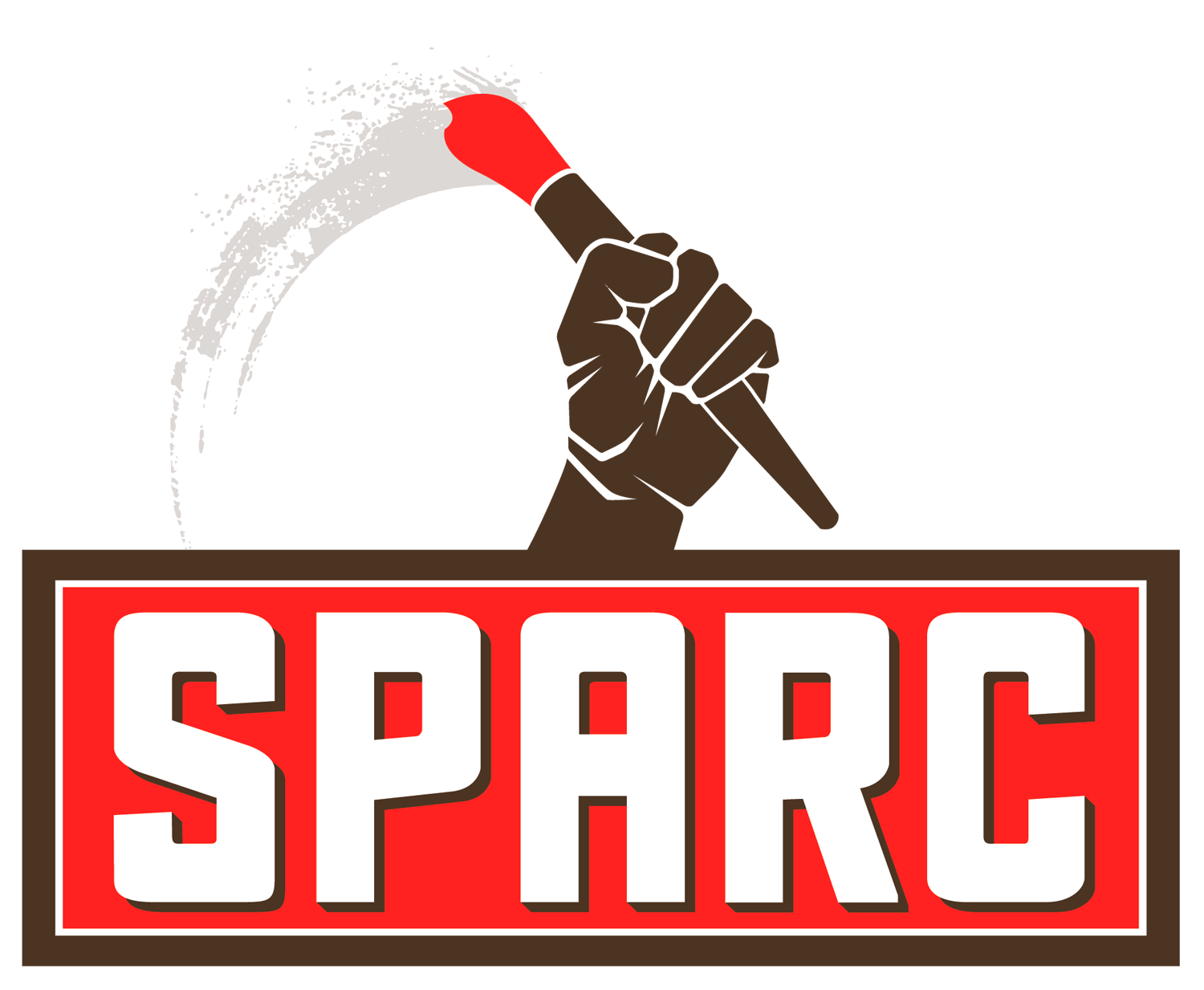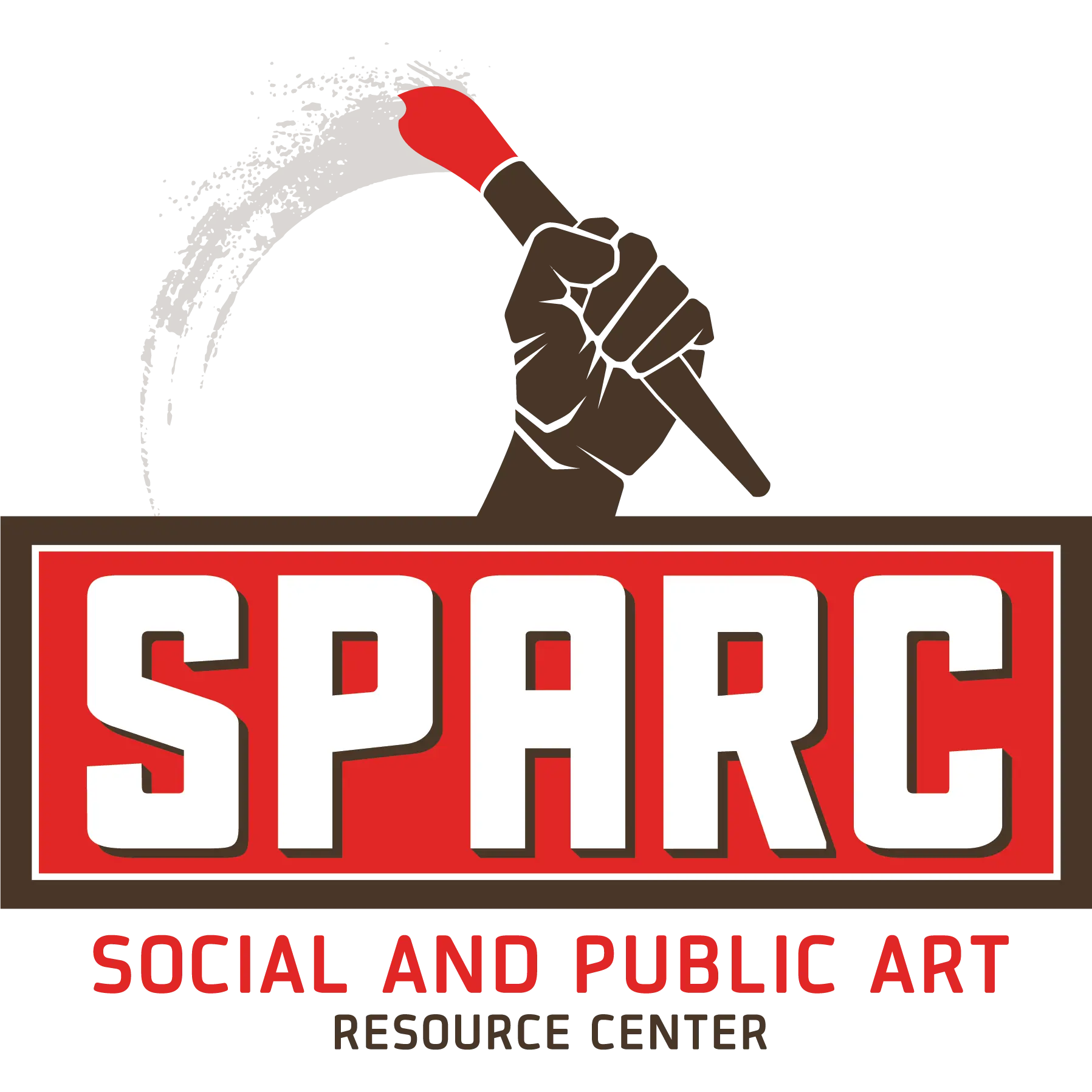Mural Ordinance: Why VARA? Why Digital Murals? Suzanne Lacy’s Digital Mural as a Case Study

“Three Weeks in January” Suzanne Lacy’s Digital Mural
A Case Study for the New LA Mural Ordinance
DIGITAL MURAL
Suzanne Lacy’s “Three Weeks in January” is an 8’ x 32’ evolving Digital Mural fabricated in the UCLA@SPARC César Chávez Digital/Mural Lab facility. The digitally produced mural is printed directly on an aluminum substrate, and was the result of the artist’s aesthetic choice based on the metallic architectural elements found in the LAPD headquarters. For the past 16 years research has been carried out at SPARC in the UCLA@ SPARC César Chávez Digital/Mural Lab pushing the boundaries of materials traditionally used for outdoor and indoor murals by experimenting with the latest available technologies and digital processes.
“Three Weeks in January” by Suzanne Lacy is an example of an innovative artwork that challenges current definitions of a mural. As the drafted mural ordinance currently stands, it will restrict murals digitally printed on substrates and attached to privately owned walls. This artwork does not fit into the narrow definition currently being utilized in the ordinance draft to draw a distinction between signs and murals because it is:
Mechanically produced
Is not directly painted on the structure,
Is modified daily with additional paint
Is temporarily installed.
We do not need to restrict the innovation of contemporary artists, or the methods and materials they utilize to establish a distinction between art and signage because this distinction exists in two laws that are not widely enforced and are not known by muralists.
VARA
Through SPARC’s advocacy, consultation with leading intellectual property rights attorneys for visual artists and practicing muralists, we have found that the Visual Artist Rights Act (VARA) and the California Art Preservation Act (CAPA) has an already established distinction between commercial works and original art murals through a pre-existing case body. Including VARA and CAPA in the ordinance adds this legal precedence.
If included, contracts between artists and property owners that retain the artist’s intellectual property rights and VARA can receive mural permits. Artists hired to create murals intended to sell a product or in a work-for-hire model are exempt from VARA protection. If artists are to qualify for a mural permit, their mural contract
Must not modify or deny the artists VARA rights,
The artist must retain their ownership rights of the mural, and
The artist cannot be employed through a “work-for-hire” model or mural be “made for hire”.
If a mural artist contract restricts, denies or modifies an artists VARA rights, it should be considered a sign, advertisement or commercial work and not qualify for a mural permit. The work may still qualify for a sign permit.
As the current draft stands, it attempts to distinguish signs from artwork by creating a new definition that restricts the medium and the methods used to make murals. The new mural ordinance definition of a mural does not protect the future artworks from the encroachment of advertising and commercial works as artists can be asked to paint corporate logos, advertise products as a condition of employment or sponsorship. Anyone who lives in Los Angeles knows that the advertising industry is capable of quickly adapting to new conditions; our city walls are no strangers to painted or graffiti advertisements.
U.S. Copyright Law’s case body clearly states that advertising and commercial works are not entitled to VARA protection. However, VARA’s protection can be modifiable through contracts/agreements and many artists have been asked to waive their rights as a condition of receiving a mural contract. Pro-VARA contracts should be sanctioned by the City of LA through the mural permit because VARA provides conditions for resolving land use issues between artists, property owners, and the mural should it need to be removed.
We support the 5-year mural permit period, which we believe will be an incentive for artists to produce high quality work. Land-use issues are raised when the property owner requires the removal of a mural. VARA allows for property owners to remove artworks before the 5-year requirement, so long as artists are given 90 days to respond. The city can mitigate potential property owner/artist conflicts by requiring VARA in their contractual agreement.
For example, if a mural is completed on a private property, and the property owner asks the artist to remove the work a week later, if the artists agrees immediately there is no reason to wait 90 days to remove or change the work. VARA in this case provides a solution for temporary/revolving artworks so long as property owners and artists are in agreement with the changes.
We also believe that the mural permit must include a retroactive permitting process. If a non-permitted work is discovered but the agreement between property owner and artist upholds VARA and is for non-commercial purposes, then it should be allowed to apply for a retroactive permit without additional fines. Beautifying our neighborhoods with artwork is not a crime. A pro-VARA ordinance would mean pro-VARA contracts for artists.
A non-VARA mural ordinance would give private property walls to off-site commercial signage at discounted rates. Without there being a legally defensible distinction between art and signs in the ordinance, sign companies can disguise advertisements as murals to access private property walls. If the city planning department attempts to invent a new definition, the City of Los Angeles risks being threatened by advertising companies for infringing on first amendment rights.
The benefits of including VARA in the ordinance:
Provides a strong base to build a distinguishing definition for original art murals,
Creates a pro-artist rights working environment and
Gives future artists permission to innovate and experiment with new materials and processes.
Suzanne Lacy’s evolving Digital Mural brings to light key aspects of how an artwork is legally distinguished from a sign. SPARC is advocating for what is best for all artists, not just some. Suzanne Lacy’s “Three Weeks in January” is a clear example of why we must support the ingenuity and innovation of artists who are making powerful statements in the public realm. The City of Los Angeles should not restrict artistic expression by restricting artists media or methods that advance innovations of the mural form, but rather restrictions should reside in the contractual agreements as a condition of a mural permit. Restrict only advertising, not art, by supporting the inclusion of VARA in the mural ordinance.
Therefore, SPARC advocates for the inclusion of VARA in the following two segments of the Mural Ordinance:
The Purpose section and The Defining Terms section of Original Art Mural


